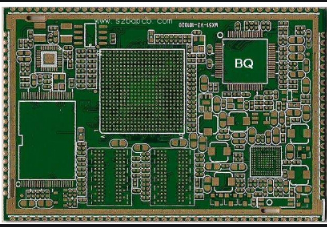This article introduces the related technologies of multi-chip modules. The low-cost requirements of consumer electronic products have promoted the application of PCBMCM technology. For products that must be integrated with high density to meet the requirements of high performance, miniaturization and low cost, PCBA MCM can choose a variety of packaging technologies.
Keywords: multi-chip module, substrate, package, printed circuit board
1 MGM overview
PCBA MCM is a module composed of two or more bare chips or chip-scale package (CSP) ICs assembled on a substrate.

The modules form an electronic system or subsystem. The substrate can be a PCB, thick/thin film ceramic or a silicon wafer with interconnection patterns. The entire PCBA MCM can be packaged on the substrate, and the substrate can also be packaged in the package body. The PCBA MCM package can be a standardized package that contains electronic functions for easy installation on a circuit board, or it can be a module with electronic functions. They can all be installed directly into the electronic system (PC, instrument, mechanical equipment, etc.).
2 MGM technology
There are many articles about PCBA MCM technology introduction in China. Simply put, PCBA MCM can be divided into three basic types: PCBA MCM-L is a PCBA MCM that uses a sheet-like multilayer substrate.
PCBA MCM-L technology is originally a high-end PCB technology with high-density packaging requirements, and is suitable for PCBA MCM using bonding and PC processes. PCBA MCM-L is not suitable for occasions with long-term reliability requirements and large temperature differences in the operating environment.
PCBA MCM-C is a PCBA MCM using a multilayer ceramic substrate. From analog circuits, digital circuits, hybrid circuits to microwave devices, PCBA MCM-C is suitable for all applications. Low-temperature co-fired ceramic substrates are used most among the multilayer ceramic substrates, and their wiring width and wiring pitch range from 254 microns to 75 microns.
PCBA MCM-D is PCBA MCM using thin film technology. The substrate of PCBA MCM-D is composed of deposited multilayer dielectric, metal layer and base material. The substrate of PCBA MCM-D can be silicon, aluminum, alumina ceramic or aluminum nitride. The typical line width is 25 microns, the line center distance is 50 microns, and the interlayer channels are between 10 and 50 microns. Low dielectric constant materials such as silicon dioxide, polyimide or BCB are often used as dielectrics to separate metal layers. The dielectric layer is required to be thin, and the metal interconnection is required to be small but still requires an appropriate interconnection impedance. If silicon is used as the substrate, thin film resistors and capacitors can be added to the substrate, and even the protection circuits (ESD, EMC) of the memory and modules can be built on the substrate.
3 Market driving force of PCBA MCM
The main reasons for using PCBA MCM to replace surface mount integrated circuits used on PCBs are as follows.
3.1 Reduce the size
On PCBs using surface mount integrated circuits, the chip area accounts for about 15% of the PCB area, while on PCBs using PCBA MCM, the chip area can reach 30-60% or even higher.
3.2 Technology integration
In PCBA MCM, digital and analog functions can be mixed together without limitation. An application specific integrated circuit can be packaged together with a standard processor/memory, and Si and GaAs chips can also be packaged together. In some PCBA MCM, passive components are packaged together to eliminate mutual interference, and PCBA MCM I/O can also have more flexible choices.
3.3 Data speed and signal quality
High-speed components can be installed closer to each other, and IC signal transmission characteristics are better. Compared with the standard PCB, the total capacitance and inductive load of the system are lower and easier to control. The anti-electromagnetic interference capability of PCBA MCM is also better than that of PCB.
3.4 Reliability/use environment
Compared with large electronic systems, small systems can better prevent electromagnetic, water, gas and other hazards.